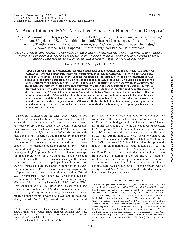摘要
Avian influenza viruses preferentially recognize sialosugar chains terminating in sialic acid-alpha 2,3-galactose (SA alpha 2,3Gal), whereas human influenza viruses preferentially recognize SA alpha 2fiGal. A conversion to SA alpha 2fiGal specificity is believed to be one of the changes required for the introduction of new hemagglutinin (HA) subtypes to the human population, which can lead to pandemics. Avian influenza H5NI virus is a major threat for the emergence of a pandemic virus. As of 12 June 2007, the virus has been reported in 45 countries, and 312 human cases with 190 deaths have been confirmed. We describe here substitutions at position 129 and 134 identified in a virus isolated from a fatal human case that could change the receptor-binding preference of HA of H5N1 virus from SA alpha 2,3Gal to both SA alpha 2,3Gal and SA alpha 2,6Gal. Molecular modeling demonstrated that the mutation may stabilize SA zeta 2,6Gal in its optimal cis conformation in the binding pocket. The mutation was found in approximately half of the viral sequences directly amplified from a respiratory specimen of the patient. Our data confirm the presence of H5N1 virus with the ability to bind to a human-type receptor in this patient and suggest the selection and expansion of the mutant with human-type receptor specificity in the human host environment.
- 出版日期2007-9
